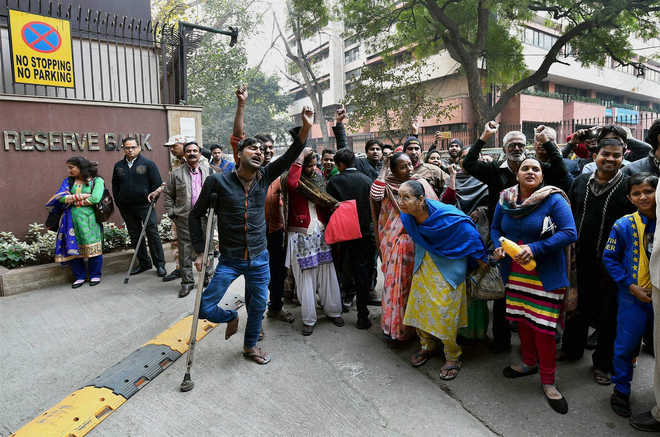
The mystery continues: The RBI and the government have not yet answered how much black money got neutralised by demonetisation
Games financial elite play
Nirmal Sandhu
The subtitle aptly sums up the book’s theme: How the financial elite & their networks rule our world. It is about how billionaires, fund managers, CEOs, policymakers — or superhubs as the writer calls them — forge networks to use and dominate the system.
To emphasis why you should bother, she quotes Douglas Rushkoff: “If you don’t know how the system you are using works, chances are the system is using you”.
The real purpose of the movers and shakers annually meeting in Davos or at other business summits is not to discuss critical global problems but to create — and benefit from — peer-to-peer power-networking opportunities. Such networking leads to an unequal access to opportunities and resources.
The 1 per cent that owns as much as the remaining 99 per cent of the population uses the system for self-advantage. Inequalities widen and unequal societies tend to be unstable, and as the writer puts it, “Systems that fail to correct themselves ultimately self-destruct”.
Practices of individual-to-individual linkages in preference to institution-to-institution ties are not limited to the financial world. The book should prompt similar research in politics as politicians — opponents in public — hobnob with each other in private to protect each other from any systemic harm.
A bad idea, badly implemented
If the objective of bringing out this book was to exploit reader interest generated by demonetisation announced on November 8, 2016, then Prof Arun Kumar scored as his book Understanding the Black Economy and Black Money in India came out first. For the lay newspaper reader Arun Kumar’s book is sufficient but Rammanohar Reddy’s is a more scholarly work backed with references and sources; after all, he was the Editor of Economic and Political Weekly (2004-2016), which has a built a reputation for itself for publishing research-based, tough-to-read articles.
Reddy is on the side of critics in the debate on demonetisation. They all raise the same, familiar question: “All the disruption and distress, to what purpose?” After a thorough study he reaches the conclusion: “Whichever way one looks at it, Demonetisation 2016 was not a good idea”.
The RBI and the government have not yet answered how much black money got neutralised by demonetisation. Initial estimates indicate much of the outlawed currency has returned to the banking system. Tax evasion and generation of unaccounted cash, however, is still the norm in areas like real estate, retail and wholesale trade, and professional services. Illicit income continues to move through over/under invoicing, share price manipulation, round-tripping of capital through P-notes and outflows to tax havens. To cover up its failure, the government has shifted to counting digitisation and GST benefits. Its inaction of unaccounted wealth stashed abroad and its studied silence on Indians named in the Panama Papers reveals its real intent on black money holders.
A journalistic account of the RBI
At the outset the writer says his aim in writing the book is “to inform and entertain” so the work should not be held to academic standards. An economic editor with a publisher before he took to journalism, Raghavan was commissioned to edit and write parts of Volume 3 of the RBI’s history (1967-81) but had to leave midway after Bimal Jalan, Chairman of the Advisory Committee, “issued a fatwa: the writing has to be dull and boring”. He was hired for being a journalist and fired for being that.
When it was set up, the RBI’s role was described by the then British central banker as that of a “’Hindoo wife’ who offers advice but never asserts herself”. The book may be helpful to those interested in the RBI’s pre-1981 history.


























